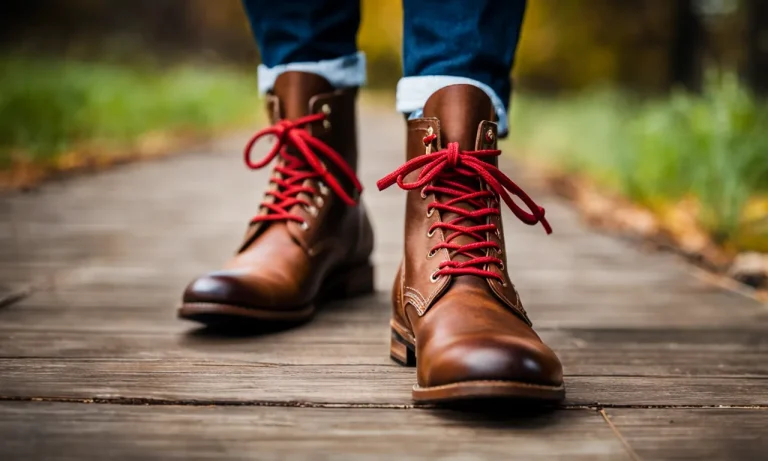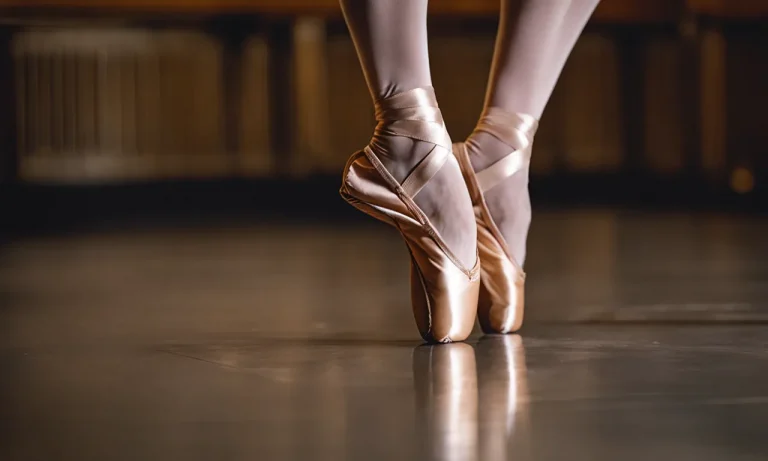Suede boots are stylish and comfortable footwear for fall and winter. But what happens if your suede boots get wet? Can suede boots get wet safely, or will water ruin them completely? This comprehensive guide will examine everything you need to know about wearing suede boots in wet weather.
If you’re short on time, here’s the quick answer: Yes, suede boots can get wet, but you need to waterproof them first and dry them properly afterwards to avoid damage.
In this roughly 3000 word guide, we’ll cover how suede leather reacts to water, techniques for waterproofing suede boots, what to do if your boots get wet unexpectedly, how to dry suede boots correctly, and care tips to extend the life of your boots.
The Nature of Suede Leather
Suede is a type of leather that is known for its soft, velvety texture. It is made from the underside of animal skin, specifically from the inner layer of the hide. What sets suede apart from other leathers is its unique manufacturing process.
Suede is created by sanding or buffing the surface of the leather, which gives it its characteristic nap. This process creates a luxurious and supple material that is highly sought after in the fashion industry.
What Makes Suede Different from Other Leathers
Suede leather differs from other leathers in several ways. Firstly, its texture is much softer and smoother compared to full-grain or top-grain leathers. This makes suede an attractive choice for those who value comfort and a luxurious feel.
Additionally, suede has a unique appearance due to its velvety nap, which adds a touch of elegance to any outfit.
Furthermore, suede is also more flexible than other leathers, allowing for greater ease of movement. This makes it a popular choice for footwear and garments that require a higher level of dexterity. Suede is commonly used in the production of boots, jackets, handbags, and accessories.
Why Suede is Vulnerable to Water Damage
While suede offers many desirable qualities, it is important to note that it is particularly vulnerable to water damage. Unlike other leathers, suede does not have a protective layer or finish applied to its surface.
This lack of protection makes it highly absorbent and prone to staining and discoloration when exposed to water.
When suede comes into contact with water, it tends to darken, stiffen, and lose its softness. This is because water disrupts the integrity of the delicate fibers that make up the suede. Additionally, prolonged exposure to water can lead to permanent damage such as shrinkage or warping of the material.
It is important to take precautions to protect your suede boots from water damage. This can include applying a waterproofing spray specifically designed for suede, avoiding wearing suede in wet conditions, and promptly treating any water stains or spills that occur.
By taking these preventive measures, you can extend the lifespan of your suede boots and keep them looking great for years to come.
Waterproofing Suede Boots
Suede boots can be a stylish and versatile addition to your footwear collection, but what happens when they get wet? Can suede boots withstand the elements? In this detailed guide, we will explore different methods to waterproof your suede boots and protect them from water damage.
Spray-On Waterproofing Products
Spray-on waterproofing products are a popular choice for protecting suede boots from water damage. These products create a barrier on the surface of the suede, preventing water from seeping in. Simply spray the product evenly over the boots, making sure to cover all areas.
Allow the boots to dry completely before wearing them. It is important to note that spray-on waterproofing may alter the appearance of the suede, so it is recommended to test the product on a small, inconspicuous area before applying it to the entire boot.
Waxes and Creams
Another effective method for waterproofing suede boots is by using waxes and creams. These products provide a protective layer that repels water and helps to maintain the natural texture of the suede. Apply the wax or cream to the boots using a clean cloth, making sure to work it into the suede.
Allow the product to dry and then use a soft brush to restore the suede’s nap. Repeat this process periodically to maintain the waterproofing effects.
At-Home Waterproofing Options
If you prefer a more DIY approach, there are several at-home waterproofing options you can try. One popular method is to use a mixture of white vinegar and water. Simply combine equal parts vinegar and water, dampen a clean cloth with the mixture, and gently rub it onto the suede.
Allow the boots to air dry and then brush them with a soft brush to restore the nap. Another option is to use a hairdryer on a low heat setting to gently dry any wet spots on the boots. However, be cautious not to apply too much heat as it can damage the suede.
Remember, regardless of the method you choose, it is important to regularly clean and maintain your suede boots to prolong their lifespan. Proper care and waterproofing will help keep your suede boots looking great and protect them from water damage.
What to Do if Your Suede Boots Get Wet
Suede boots are a stylish and popular choice for footwear, but they can be vulnerable to water damage. If you find yourself caught in a sudden rainstorm or accidentally step into a puddle, it’s important to know how to properly care for your suede boots to minimize any potential damage.
Here are some steps you can take to ensure your suede boots stay in great condition even after getting wet.
Minimize Damage Right Away
The first thing you should do if your suede boots get wet is to act quickly to minimize any potential damage. Start by removing any excess water from the boots. You can do this by gently patting them with a clean, dry cloth or towel.
Avoid rubbing the suede vigorously as this can cause the water to penetrate deeper into the material, potentially causing more damage. Once you have removed as much excess water as possible, allow the boots to air dry naturally, away from direct heat sources such as radiators or hair dryers, which can cause the suede to become stiff and crack.
Dry Them Slowly and Carefully
Drying your suede boots slowly and carefully is crucial to prevent them from becoming misshapen or damaged. Stuff the boots with crumpled newspaper or clean, dry cloths to help absorb moisture and maintain their shape. Change the newspaper or cloths every few hours until the boots are completely dry.
Avoid using heat sources like heaters or direct sunlight, as they can cause the suede to shrink or warp. Patience is key when drying suede boots, so resist the temptation to rush the process.
Restore Their Shape
If your suede boots have become misshapen after getting wet, there are ways to restore their original form. Once the boots are completely dry, gently brush the suede with a soft-bristle brush to restore the nap and remove any remaining moisture.
If the shape is still not quite right, you can try using shoe trees or stuff the boots with tissue paper to help them regain their shape. Leave the boots with the shoe trees or tissue paper for a day or two, and they should start to regain their original shape.
Treat Stains or Discoloration
If your suede boots have developed stains or discoloration as a result of getting wet, there are methods you can use to treat them. Start by gently brushing the affected areas with a suede brush to remove any loose dirt or debris.
For stains, you can try using a suede eraser or a mixture of water and vinegar. Apply the solution to a clean cloth and gently blot the stain, being careful not to rub it in further. For stubborn stains, it may be best to consult a professional suede cleaner for advice or assistance.
Remember, prevention is always better than cure when it comes to suede boots and water damage. Consider applying a protective suede spray or waterproofing treatment to your boots before wearing them in wet conditions. This can help repel water and minimize potential damage.
Additionally, always check the care instructions provided by the manufacturer for specific recommendations on how to care for your suede boots.
With the right care and attention, your suede boots can stay looking great for years to come, even if they do happen to get wet. So don’t let a little rain dampen your style – follow these tips and enjoy your suede boots worry-free!
Caring for Your Suede Boots Long-Term
When it comes to extending the lifespan of your suede boots, proper care is essential. By following a few simple steps, you can keep your boots looking great for years to come. Here are some tips on how to care for your suede boots long-term:
Storage Tips
One of the first things to consider when caring for your suede boots is how you store them. Proper storage can prevent damage and help maintain their shape. Here are a few storage tips to keep in mind:
- Store your suede boots in a cool, dry place away from direct sunlight. Excessive heat and sunlight can cause the suede to fade or discolor.
- Avoid storing your boots in plastic bags or airtight containers. Suede needs to breathe, so it’s best to use a breathable shoe bag or wrap them in a soft cloth.
- Stuff your boots with tissue paper or boot inserts to help them maintain their shape. This will prevent them from becoming misshapen over time.
Cleaning Regularly
Regular cleaning is crucial for keeping your suede boots in top condition. Here are some steps to follow when cleaning your suede boots:
- Start by using a suede brush or a soft cloth to remove any loose dirt or debris from the surface of your boots. Be gentle to avoid damaging the suede.
- If there are any stains on your boots, use a suede eraser or a mixture of water and mild soap to gently remove them. Test the solution on a small, inconspicuous area first to ensure it doesn’t cause discoloration.
- Once you’ve cleaned the boots, let them air dry naturally. Avoid using direct heat sources like a hairdryer, as this can damage the suede.
- After they have dried, use a suede brush to restore the nap and texture of the suede. Brush in one direction to avoid damaging the fibers.
Re-Waterproof Periodically
Waterproofing your suede boots is essential to protect them from moisture and stains. Here’s how you can re-waterproof your boots:
- Choose a suede waterproofing spray that is specifically designed for suede materials. Test the spray on a small, inconspicuous area first to ensure it doesn’t affect the color or texture of the suede.
- Hold the spray bottle about 6 inches away from the boots and apply an even coat of the waterproofing spray. Be sure to cover the entire surface of the boots.
- Allow the boots to dry overnight before wearing them. This will ensure that the waterproofing spray has fully absorbed into the suede.
- Reapply the waterproofing spray every few months or as needed, depending on how frequently you wear your boots and the weather conditions you expose them to.
By following these tips for caring for your suede boots long-term, you can enjoy their stylish look and durability for many seasons to come.
Conclusion
With the right waterproofing and care, suede boots can withstand wet weather and the occasional splash. Preparing the leather and acting quickly after exposure to moisture will allow you to safely wear suede boots on rainy and snowy days.
Follow these tips, and your boots will remain stylish, comfortable, and durable for many seasons to come.






